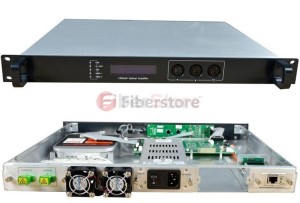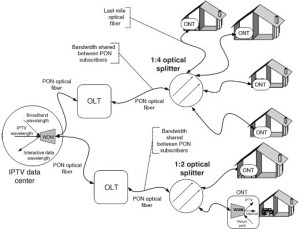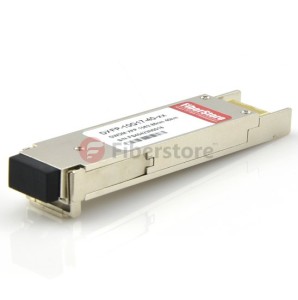Transport and aggregation network design
Network operators have the common basic target to produce cost-efficient telecommunication services. When considering operators from different nations including carriers operating worldwide, a variety of network architecture designs need to be considered. The suitable network design depends on the individual national properties with respect to the telecommunication services to be provided, such as the local population density distributions, the characteristic local residential consumer behavior, for example, the demand for voice telephony, internet protocol, or broadband TV, or the distribution and service level agreement (SLA) requirements of the business customers. The design of the network is governed by the topology. DWDM network for example, ring, star, mesh, by the purpose (access, aggregation, transport), by the mean and maximum link distance, and by the density and degree of switching or grooming nodes. All this has a direct impact on the choice of amplification in the optical multiplex section (OMS) of DWDM systems and on the local placement of DWDM optical amplifiers.
The diameter of networks is one of the most obvious distinctions. Nationwide networks in the United States follow engineering rules different from those applicable to the national backbones in European countries, especially when the design of amplifier maps and the positioning of photonic cross connect (PXC)/ROADM based nodes are considered. The largest diameters within all optical transport is achieved in submarine cable networks that deploy lumped amplifier span designs with very short distance between adjacent DWDM EDFA and eventually supported by additional distributed Raman amplification.
Besides the distance, many other parameters influence decisions for special network layouts, such as the local distribution of population and industry to be connected, the traffic patterns and capacity evolution, the telecommunication service kinds and classes, and much more. Also, the deployment choice of lumped inline amplifiers . distributed Raman amplification or hybrid schemes, gain equalizing devices, electrical or optical inline regenerators, and electrical grooming nodes or optically amplified multi degree ROADM nodes is strongly dependent on these multiple factors.
The research shows that some network options with consequences for optical amplifier applications will be described against the background of European national network. Here a variety of requirements force operators to select many different network architectures for different local domains with suitable primary foci to meet optimum transport efficiency and operational performance. The present trend is to consolidate different network domains into a converged platform to simplify the overall network management process.
European networks cover many scenarios of possible architectures, for ultra long-haul (ULH) pan-European backbone to national European backbone, metro, and access networks. The typical distance characteristics of link lengths between major backbone nodes for North America and pan-European networks, but the distance are significantly shorter. The backbone links of national networks of the different European states like Germany reference network. Here the mean fiber link distance between major between major cities and thus backbone nodes is about 400 km which could be still called “metro”. However, as for the next generation architecture it is intended to intensively apply optically transparent transmit nodes (ROADM/PXC), future national networks will also demand systems with a longer reach. In the following sub-sections we will focus on typical modern intranational European network architectures.
Future converged telecommunication platforms will comprise access, aggregation, and transport networks. Their design rules depend on their primary purpose: either traffic aggregation or distribution from and to customers, or the transport and routing of large amounts of combined capacity.
Fiberstore store is specialized in optical fiber products, DWDM optical fiber amplifier is one of their main product categories, if you want to learn more about the DWDM, welcome to visit our online shop. http://www.fiberstore.com



